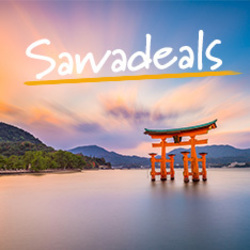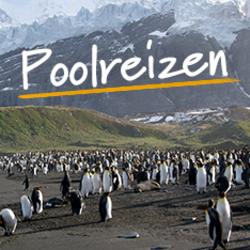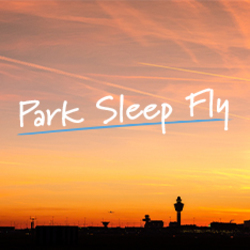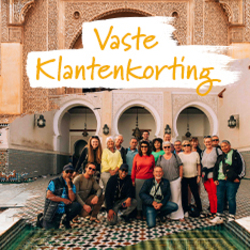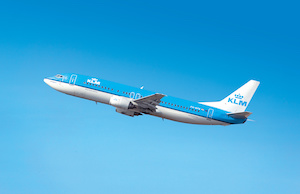Sawadee de nummer 1 in Groepsreizen en Avontuurlijke Reizen
Activities
- Wildlife Holidays
- Marine Wildlife
- Birdwatching
- New Wildlife Holidays
- — Seven nights aboard Archipel I exploring the Galapagos Islands — Experience incredible wildlife viewing and photographic opportunities with near-tame animals — High chance of spotting booby colonies, great and American frigatebirds, flightless cormorants, Galapagos penguins, green sea turtles, Galapagos giant tortoises, whitetip reef sharks and marine iguanas — Fantastic on-board service with experienced naturalist guide
- Family
Food
Activities
-
1
Start Quito
The adventure begins in Quito, aim to arrive at the hotel this afternoon/evening. Free transfers are available for all clients. A local guide will welcome you to Quito and explain the schedule for the next few days. Accommodation: Hotel Casona de la Ronda (or similar)
-
2
Discover Quito at your leisure
Today is free to relax, recover from the flight and explore the fascinating city of Quito, the second-highest capital in the world, standing at 9,350ft (2,850m) on the western cordillera of the Andes. It is one of the smaller and more attractive of the colonial capitals in South America. Because of the altitude, visitors to Quito are advised to take it easy at first. Accommodation: Hotel Casona de la Ronda (or similar)
-
3
Fly to San Cristóbal Airport and visit Interpretation Centre
Morning: Fly to Galapagos Transfer to Quito Airport and fly to San Cristóbal Airport in the Galapagos Islands. Upon arrival, you will pass through the airport inspection point to make sure no foreign plants or animals are introduced to the island, and to pay the national park entrance fee. Your guide will meet you, help you collect your luggage and escort you on a short bus ride to the harbour where a dinghy will take you to the yacht. Afternoon: Interpretation Centre The Interpretation Centre provides a perfect explanation of this unique archipelago – the exhibition reveals what makes it so unique. Information panels, pictures, documents, maquettes and dioramas delve into the background and conservation stories of the islands. Accommodation: Archipel I
-
4
Sante Fe and South Plaza
Morning: Sante Fe Sante Fe is a jewel of the Galapagos, where the pale Barrington land iguana and practically every other creature is unique to the archipelago or this island alone. Afternoon: South Plaza Popular South Plaza is not to be missed! This Jurassic islet is the best place to see the emblematic Galapagos dragons, which crawl across it. Accommodation: Archipel I
-
5
North Seymour and Chinese Hat
Morning: North Seymour North Seymour is another cruise highlight. It’s home to the most extensive seabird breeding colony in the archipelago and you can walk just a short distance from frigatebirds and blue-footed boobies. Afternoon: Chinese Hat Chinese Hat is a 170ft (52m) high volcanic cone, forming another islet right off the rocky coast of Santiago, where a small colony of Galapagos penguins have settled. Approaching Chinese Hat from the north, you will understand the meaning of the name. This is an excellent place to learn more about volcanoes, lava bombs and lava tunnels. You arrive just in time to see how this barren islet is being colonised by pioneer plant species! Beautiful beaches of white coral sand and holes in the eroding lava fields are filled with lava sand, which enables rooting. Galapagos sea lions and countless marine iguanas contribute to fertilisation and thus create many favourable options for newcomers, such as saltbush and the sesuvium carpet. Accommodation: Archipel I
-
6
Santa Cruz Island
Morning: El Chato Reserve – Twin Craters The native scalesia forest of El Chato Tortoise Reserve is the best place to search for Galapagos giant tortoises in their most authentic setting! Despite the interesting breeding centres – where you are guaranteed to find tortoises in their corrals – there is nothing better than to observe them in their wild environment. Though it can be quite moist and muddy, your visit may turn into an adventurous quest when they have left their favourite pond silently. The Twin Craters are found on either side of the road leading to Puerto Ayora. These impressive formations are not really volcanic craters but were formed by magma domes, which hardened on the outside while the lava flowed inside, leaving huge, empty magma chambers that eventually collapsed and left two large holes. The craters lie within a lush scalesia cloud forest, a high-altitude plant species that are endemic to the Galapagos. This area is also home to the carpenter finch, which uses tools to search for food. There may also be opportunities to see the vermillion flycatcher, a small red-breasted bird. Afternoon: Fausto Llerena Breeding Center On a tour of the Fausto Llerena Breeding Center, you can see the tortoises of Española Island, ending in the tortoise exhibit corral. Tortoises of this corral are accustomed to humans – an excellent chance to photograph them. Accommodation: Archipel I
-
7
Isabela Island
Morning: Moreno Point Moreno Point is on the north coast of Isabela Island, between the volcanoes Sierra Negra and Cerro Azul. The trail runs along a solidified pahoehoe lava flow into a complex of coastal lagoons. The main attractions here are several bird species, which are found around the lakes and mangroves. Afternoon: Urbina Bay Urbina Bay runs along the west coast of Isabela, between Elizabeth Bay and Tagus Cove and close to Alcedo Volcano. It's home to large, colourful land iguanas, giant tortoises, and lots of Darwin finches. Additionally, the coastline here underwent a major uplift in 1954, which caused the shore to expand 0.75mi (1.2km) out. As a result, you can now find corals, shells, and many other calcareous organisms exposed above the water. Accommodation: Archipel I
-
8
Fernandina and Isabela islands
Morning: Espinoza Point (Fernandina) Fernandina is the third-largest island in the archipelago and has a single visitor site: Punta Espinoza, at the northeastern tip. Here, marine iguanas gather in larger groups than on any other island. They bask in the sand, swim near the shore and sometimes block the way at the landing dock. Fernandina is also home to the flightless cormorant, which can longer fly but has wings, tails and feet perfectly adapted for finding food in the ocean. Afternoon: Vicente Roca Point (Isabela) While having lunch, we cross the Bolivar Channel for the last time to Vicente Roca Point, just at the mouth of Isabela’s seahorse-shape. While entering a dark cave below a spectacular arch, the roar of waves accompanies you and, just around the corner, the collapsed amphitheatre of Volcan Ecuador offers an impressive view. The calmer cove waters are well-protected against the ocean swell and are fairly cold, but a great place for snorkelling among various species of shark, penguin, puffer fish and even seahorses. Accommodation: Archipel I
-
9
Santiago and Rabida islands
Morning: Puerto Egas (Santiago) Puerto Egas is historic and the favourite site on Santiago for wildlife lovers; it’s even the best place in the archipelago to observe Galapagos fur seals. Afternoon: Rabida Upon landing at this remarkable red beach, you will usually be greeted by a large bachelor colony of Galapagos sea lions. Accommodation: Archipel I
-
10
Disembark Santa Cruz; fly Baltra to Guayaquil and end
Morning: Black Turtle Cove (Santa Cruz) and transfer to Baltra Airport Our last adventure is brief but enchanting and takes place en route to the airport. Explore by dinghy the green landscape of Black Turtle Cove, which is mostly comprised of mangrove trees that host innumerable aerial and aquatic species. The quiet emerald lagoon and surrounding shallow bays enable the easy observation of sea turtles and groups of sharks. Then, assisted by the naturalist guide and some crew members, the dinghy will bring you and your luggage to Baltra, where we take the airport shuttle. From here, we fly to Guayaquil where it's possible to connect with international flights from 6pm onwards.




